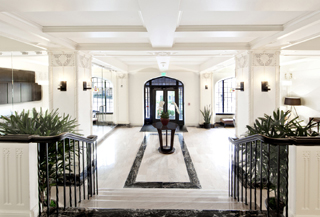November 23, 2011
Marlborough House sells for $27M, twice what it sold for last year
Journal Staff Reporter
The vintage Marlborough House on Seattle's First Hill sold yesterday for more than twice what the sellers paid for it last year.
Seattle investor Ken A. Williams of Cielo Azul Ventures paid $27 million cash for the 82-unit building at 1220 Boren Ave., according to public records and brokers who put the deal together. He plans to keep the building as apartments.
“I'm not the type to convert to condos. I'm strictly a long-term hold[er] and [will] never convert,” said Williams.
He said the deal's capitalization rate, or anticipated return on investment, is 4 percent. That's well below the average capitalization rate. During the last six months, the average cap rate for sales of properties with 20 or more units in the Seattle area was nearly 5.8 percent, according to Dupre + Scott Apartment Advisors.
“I think there is a category of renter who wants to live in a product that is condo quality and is willing to pay a premium for that,” Williams said.
Designed by architect Bertram Dudley Stuart in the Gothic-revival style, the 1927 Marlborough House has ornate exterior details, a private garden, secure parking, high-end finishes and views.
Richard Leider is a principal with Trinity Real Estate and a member of the joint venture that sold the property. He said Marlborough House has been fully occupied for three months, and tenants are paying per-square-foot rents in the “mid to upper $2 range.”
When Trinity/Helix bought Marlborough House a little more than a year ago, Leider said he expected to get rents of just over $2 a foot.
Seattle-based Trinity and Helix Funds of Chicago paid $12.75 million for the 12-story building after a bank foreclosed on a previous developer that was converting the apartments to condos. Trinity/Helix spent between $3 million and $4 million to finish upgrades and make other improvements, Leider said.
The sale closed about six weeks after Trinity/Helix retained Frank Bosl and Jon Hallgrimson of CBRE to list the property. Broker Bob Watson of R.M. Watson Co. represented Williams. The CBRE brokers said the speed shows the strength of the Seattle market and the quality of the product.
It's rare to find a vintage building that has had such a complete renovation. Bosl and Hallgrimson could think of only one other similar Seattle building, The Cobb, which is downtown.
Earlier this year, Leider told NAIOP that he chalked up Trinity/Helix's acquisition of the property to tenacity, persistence and “a little bit of luck.” The lender that sold it received 23 offers, but changed its mind at the 11th hour. Leider's team kept calling, and eventually prevailed.
When Trinity/Helix bought Marlborough House it wasn't pretty. The previous developer's contractors had not been paid, the roofers walked off the job, the debt markets were far from settled, and rents in the Seattle market were fairly stagnant.
Things got worse as the new owners started looking at what they had bought.
“It dawned on us for the first time that this is really ugly,” Leider said. The landscaping was unfinished, the lobby was dark and drab, and a hobo encampment had taken over the rooftop deck.
Among the members of the project team were Shilshole Construction, DCI Engineers, Pioneer Masonry, Shugart Architecture, Ragen & Associates, Atelier Jones, Lifestyle Landscapes, G-Logics Environmental, Peter Opsahl & Associates, Servpro, Argus Pacific and Triad.
(Editor’s note: This story has been updated to include more team members.)


